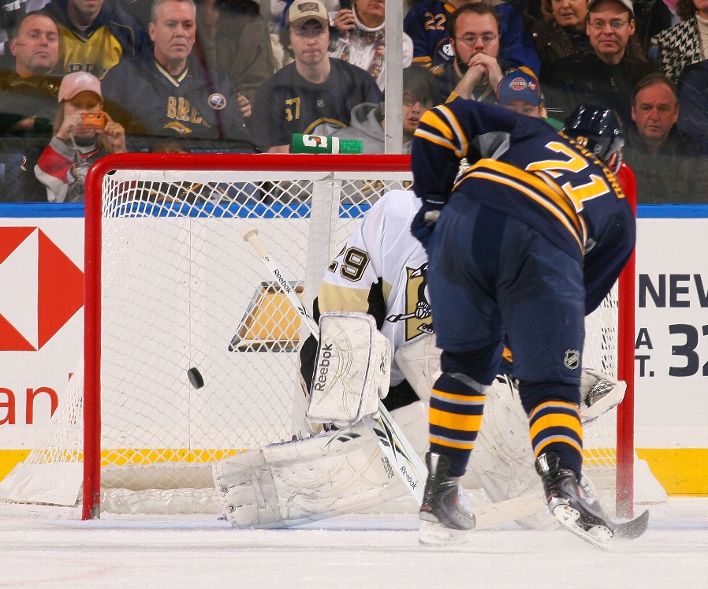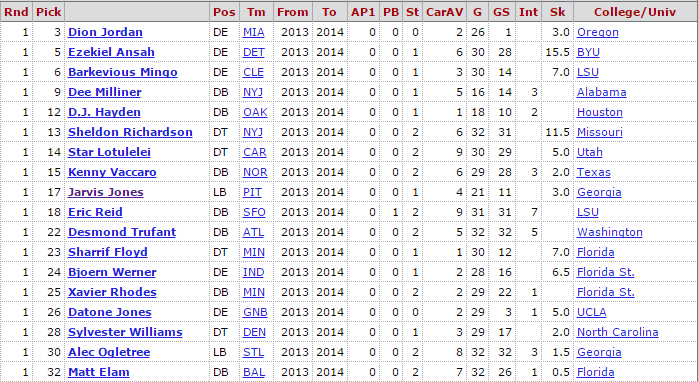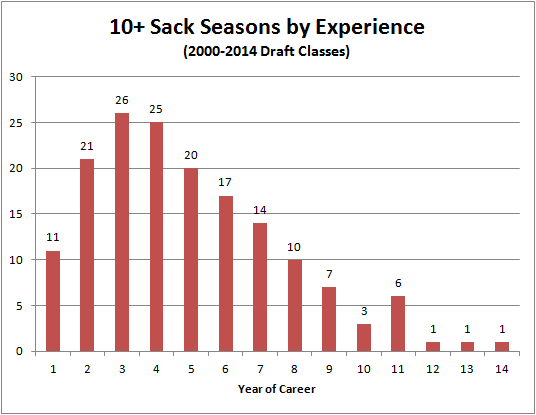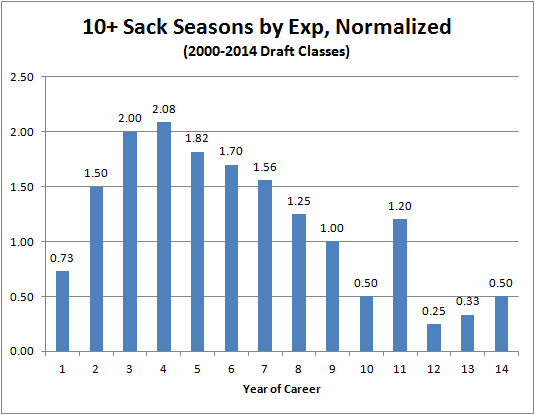As I discussed in my analysis of the Steelers 2015 Salary Cap situation, the Steelers have a gaping hole to fill at outside linebacker. Unless a deal can be worked out with Jason Worilds (which DK thinks is very possible), the Steelers current depth at the position is Jarvis Jones (injured most of 2014), Howard Jones (on 2014 practice squad), Shawn Lemon (played 2014 in CFL) and the uncertainty if Terrence Garvin or Jordan Zumwalt could play outside. Obviously, the Steelers won’t be in the financial position to pay free agent Justin Houston the money he would command in free agency after leading the league with 22 sacks this year. Looking at the 3-4 OLBs scheduled to hit the open market this year, the pickings are rather slim.
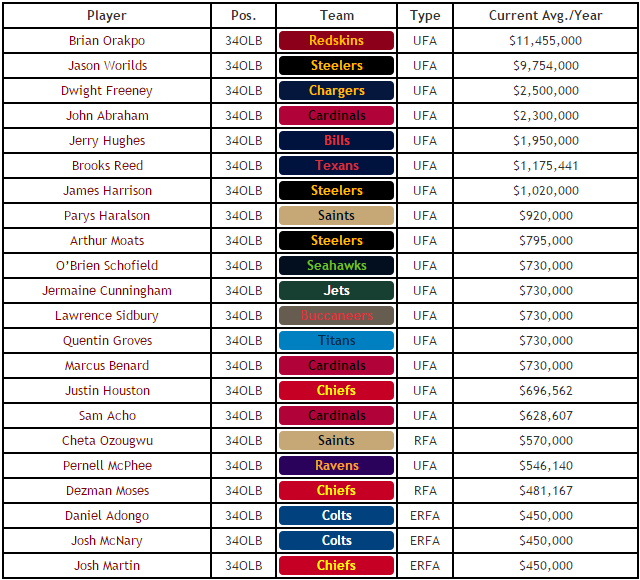
(via Over The Cap)
Outside of Houston (who is going to get a massive payday coming off his rookie contract), many have focused on the Ravens’ Pernell McPhee as being a top target. McPhee is scheme-versatile and the Ravens may not be able to pay him as they have $28.5 million in cap space tied up in Haloti Ngata, Terrell Suggs and Elvis Dumervil. Behind Houston and McPhee, the oft-injured Brian Orakpo is the next best pass rusher available followed by Jason Worilds. Naturally, if the Steelers aren’t able to find their answer in free agency, the conversation then moves to the draft. The Steelers spent a first round pick on Jarvis Jones in 2013 but he has not produced up to the level of expectations. Now, before jumping to harsh conclusions about how the Steelers draft, it is important to realize Jarvis Jones is not alone in the category of 2013 Draft Disappointments.
Of the 18 defensive players selected in the first round in 2013, 5 were edge rushers (4-3 DEs or 3-4 OLBs) yet only one of them (Ziggy Ansah) has surpassed 10 career sacks in his two seasons. When draft classes are compared, a trend begins to emerge – there is a significant learning curve for pass rushers, with a big jump usually happening between the second and third years.
Career Sack Totals of Front Seven Players
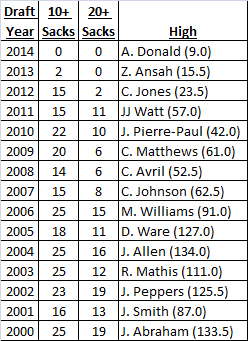
I pulled this data from Pro-Football-Reference’s Draft Database and it should be noted that these numbers do not include Undrafted Free Agents. That being said, there is a significant difference between players that are in their first and second year and players that have spent more than 2 years in the league. Looking at just the recent draft classes, only 2 players drafted in the last 2 years (Ansah and Sheldon Richardson) have more than 10 career sacks. Compare this with 30 players that have been in the league 3-4 years and 144 players that have been in the league 3-10 years. Continuing to look at draft classes, these numbers are backed up by the number of players in each class that have recorded 10+ sacks in a single season.
Note: Average Per Year of Experience is the number of 10+ sack seasons divided by years in the league of that draft class.
Now, the obvious outlier value here is the 2011 draft class which has posted 19 10+ sack seasons in just 4 years, an incredible average of close to 5 players per year with double-digit sacks. The 2011 class has been anchored by JJ Watt, Justin Houston, Robert Quinn and Von Miller who have recorded 10+ sacks in 3 of their 4 seasons. Miller probably would have had a 4th 10+ sack season if he hadn’t been suspended for 6 games in 2013.
Furthermore, when breaking down the numbers of 10+ sack seasons by years of experience, the learning curve for pass rushers begins to emerge.
For all of the front seven (DL & LBs) players drafted since 2000, the most 10+ sack seasons were recorded in the 3rd and 4th years of their respective careers. Out of those 15 draft classes, only 11 players recorded 10+ sack seasons in their rookie campaigns. That number nearly doubled in the second year of players careers as 21 players posted double-digit sacks in their second season. This supports my hypothesis that unlike players at other positions, it is much harder for rookie pass rushers to have an immediate impact. In a “win now”/”what have you done for me lately?” league, this can be a hard concept to come to terms with. Drafting an outside linebacker might be the right move for the long-term health of the Steelers defense, but it would be asking a lot to expect them to be immediate contributors.
This raw data certainly tells a story of a pass rusher learning curve, but it also skews towards the more recent years because there is simply more data points. Since all 15 draft classes since 2000 were included, there were 14 classes that have completed their 2nd year in the league (all except the 2014 class) while only 9 classes have completed 7 seasons (2000-2008 draft classes). Therefore, to create a better comparative chart, I normalized the raw data by dividing the number of 10+ sack seasons by the number of draft classes that completed that season.
The normalized chart shows, on average, how many players from a draft class will have a 10+ sack season in a given year of their career. The biggest change in this chart is for the Year 2 data. White it is still double the rookie season number, Year 2 has fallen behind Years 5, 6, and 7 on the chart. Overall, the truth is still the same – there is a significant learning curve when pass rushers enter the league. In rare instances, a dominant pass rusher will flash onto the scene right away. However the typical career path seems to be that a pass rusher does not truly come into their own until their 3rd or 4th year in the league. As an example, let’s consider Justin Houston. In his first season he posted only 5.5 sacks. His second season he broke double digits with 10.0 and had 11.0 in just 11 games in his third season. His biggest jump came in his fourth season (2014) when he had 22.0 sacks. Houston’s career has followed a similar trend to DeMarcus Ware who had 8.0, 11.5, 14.0 and 20.0 in his first four seasons.
So where does this leave the Steelers? Obviously shelling out cash for Justin Houston is not feasible. and throwing another franchise or transition tag on Jason Worilds to the tune of $10 million would blow almost our entire free agent budget. The best case scenario seems to be re-signing Jason Worilds to a multi-year deal. As I detailed last year, the market for Jason Worilds given his age and career production is likely somewhere between the $6 million AAV that Connor Barwin got (6 years, $36 million) and the $8.1 million AAV of Paul Kruger’s contract (5 years, $40.5 million). Jason Worilds has been a polarizing figure in his career in Pittsburgh. For the first 3 1/2 seasons the narrative was “Why did we take him instead of Sean Lee?” After he posted 7 sacks in the last 8 games of 2014, the narrative changed to “Get rid of LaMarr Woodley and keep Jason Worilds.” (I kid you not, those are two articles by the same author just 5 weeks apart.)
The question the Steelers front office will have to decide is if it is worth investing almost all of their free agency cap space to put a franchise tag on Jason Worilds, if his production of 7.5 sacks this year warrants a long-term deal, or if they are willing to sacrifice that production in 2015 for a long-term investment of a rookie pass rusher. Drafting a pass rusher like Dante Fowler Jr or Vic Beasley in the first round could be the best move in the long-term but historical data shows it is highly unlikely that they will have a significant impact in their first season. That said, the Steelers have not had a player reach double-digit sacks since 2010 when James Harrison had 10.5 and LaMarr Woodley had 10.0. In fact, Jason Worilds’ 8 sacks in 2013 was the only time in the last 3 seasons a Steeler had at least 8 sacks in a season. While it has been incredibly difficult for rookies to post double-digit sacks (only 11 in the last 15 years), double that amount have posted at least 8 sacks in their rookie campaigns over the same time frame. Logically, the data shows that if the Steelers want a 10+ sack season out of an outside linebacker in 2015, it is better to invest in a free agent that is in the 4th or 5th year of their career rather than banking on a rare breakout season from a rookie draft pick. However, if the Steelers believe there is an elite pass rusher available in the first round, it would be a wise long-term investment. Of the 163 double-digit sack seasons from players drafted since 2000, 83 were recorded by players selected in the first round. Of the 222 double-digit sack seasons that have been recorded by all players since 2000, 106 were by first round picks. The top of the draft is clearly the best place to find an elite pass rusher, but it is unlikely they will both extend Worilds and draft a pass rusher in the first round.
Add The Sports Daily to your Google News Feed!
